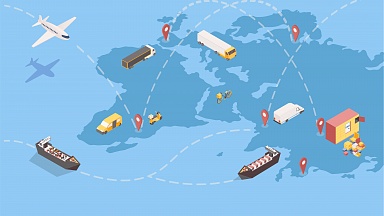In the first eight months of 2025, freight trains between China and Central Asia made 9,626 cross-border trips—an increase of 22.7% compared to the same period last year, setting a new record for this timeframe. During this period, 751,000 standard containers (TEU) were transported, marking a year-on-year growth of 31.1%, according to China Media Group.
As of 31 August 2025, the China—Central Asia freight route had completed over 69,000 trips in total, delivering more than 5.19 million TEUs of cargo.
The development of key corridors such as the China—Laos Railway and the Trans-Caspian International Transport Route has enabled trains to reach over 100 cities across 11 Asian countries. Within China, these routes span 128 cities in 28 provincial-level regions.
While the initial cargo structure was dominated by basic goods, the current range includes 22 major categories, notably new energy vehicles, photovoltaic products, and mechanical equipment.
Central Asian exports to China are also on the rise, including cotton yarn, antimony concentrate, wheat bran pellets, and barley.
Transport efficiency continues to improve. For instance, the transit time for freight trains from Lianyungang (Jiangsu Province, eastern China) to Almaty (Kazakhstan) has decreased from 10 days in 2014 to just 6 days today. Since the launch of a dedicated cross-border e-commerce train in 2024, shipments from Yiwu (a small city in Zhejiang Province) to the Tashkent market in Uzbekistan now take only 10 days—at 80% lower cost compared to air freight.
The expansion of these routes not only strengthens economic ties between China and Central Asia but also contributes to global trade, enhancing the region’s competitiveness in international logistics.



